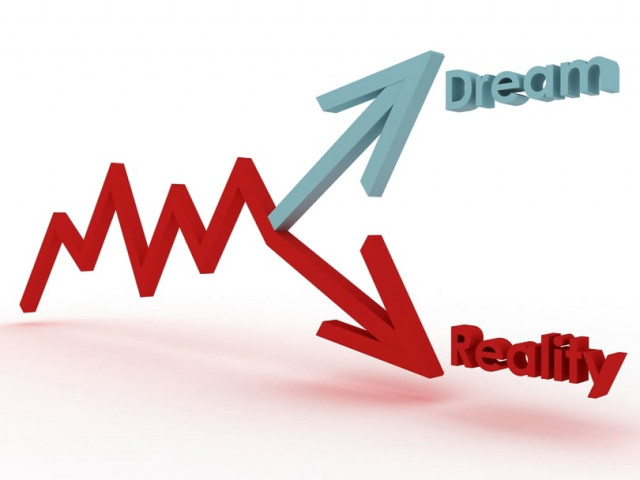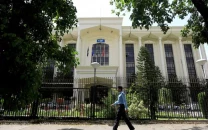Dire need for updated numbers
IMF's keen interest in country’s growth rate should be enough incentive for authorities to report accurate progress

The GDP has been underreported mainly due to manufacturing units that were set up after the last census in 2005-06 not being accounted for. STOCK IMAGE
The slow pace of industrial activity has been blamed on security concerns and lack of foreign investment.
However, there are issues that need to be addressed that would automatically present a truer state of the economy. The GDP, which reflects the state of the economy, has been underreported mainly due to manufacturing units that were set up after the last census in 2005-06 not being accounted for.
Keen interest of the International Monetary Fund in the country’s growth rate should be enough incentive for authorities to report accurate and updated progress.
Misrepresented and misunderstood
Pakistan’s true economic output is not reflected in the official gross domestic product (GDP) and this is the reason why.
It fails to include important industries that have sprung up since the last census of the manufacturing base was conducted nine years ago.
The State Bank of Pakistan (SBP) highlighted this anomaly in its annual report on The State of the Economy 2013-14, mentioning economic contributors not incorporated in the Large Scale Manufacturing (LSM) and agricultural data.
Manufacturing has a 11% share in economic output, but experts have been going on for years, saying that tens of thousands of establishments from Karachi to Faisalabad are the real drivers of the economy but remain unreported.
Read the full story here

Blame game continues
The question to be asked now is — why hasn’t a fresh census been carried out so far?
The CMI is supposed to be revised every five years but, for reasons best known to PBS’ senior hierarchy, reliance continues on outdated economic data.
The SBP itself believes that a fresh CMI is under way but officials now say that a fresh census will be conducted in 2016-17.
Read the full story here

Understanding the manufacturing share
Offering constructive insights into the misconception that has become part of the economic data, Dr Ashfaque Hasan Khan, former adviser to the Ministry of Finance, says the census of manufacturing industries and the contribution of manufacturing to GDP remains grossly understated.
“There are issues with the way information is collected. Every time the census is carried out, PBS sends a pro forma to factories but it really doesn’t matter if they don’t reply. The penalty for not answering is only a few hundred rupees.”
According to Khan, in many cases, junior accounting staff members at the manufacturing concerns are given the task to fill the questionnaires.
“They share random information, which is not always correct. But mostly they dump the questionnaire in a corner.”
Additionally, the government’s reliance on business associations for gathering the manufacturing data hardly helps either, he says.
“For instance, the information about television and other electrical appliance-makers is obtained from the electronics association. These are almost always misconceived as many manufacturers evade taxes.”
Like many other economic experts, Khan believes that unreliable and incorrect economic data undermines the effectiveness of monetary and fiscal policies.
“In my experience, this question has bewildered me. I haven’t been able to understand if the rise and fall in interest rates in Pakistan actually affects the industry.
“The conventional wisdom is that there’s a strong relationship between growth in manufacturing and interest rate. But I am not sure if that can be corroborated in Pakistan’s case.”
Khan adds that the only way to overcome the problem is to empower the PBS and enable it to get its hand on concrete data.
An incomplete picture
Macro Economic Insights CEO Sakib Sherani says the GDP’s size increased around 20% the last time the rebasing exercise was carried out.
“The last time when the CMI was updated, many industries like mineral water bottlers were added to the index. This process should be carried out every few years to capture the real picture of the economy,” he suggests.
However, the exercise is time-consuming and takes years to complete. “PBS takes technical assistance from Germany’s GIZ to ensure the economic numbers are rightly updated.”
Notwithstanding the size of LSM, he says the formal manufacturing sector has been shrinking for years.
“The manufacturing base might be five times larger than what is projected right now. But the fact remains that new investment hasn’t been going into factories.”

Published in The Express Tribune, January 19th, 2015.
Like Business on Facebook, follow @TribuneBiz on Twitter to stay informed and join in the conversation.



















COMMENTS
Comments are moderated and generally will be posted if they are on-topic and not abusive.
For more information, please see our Comments FAQ